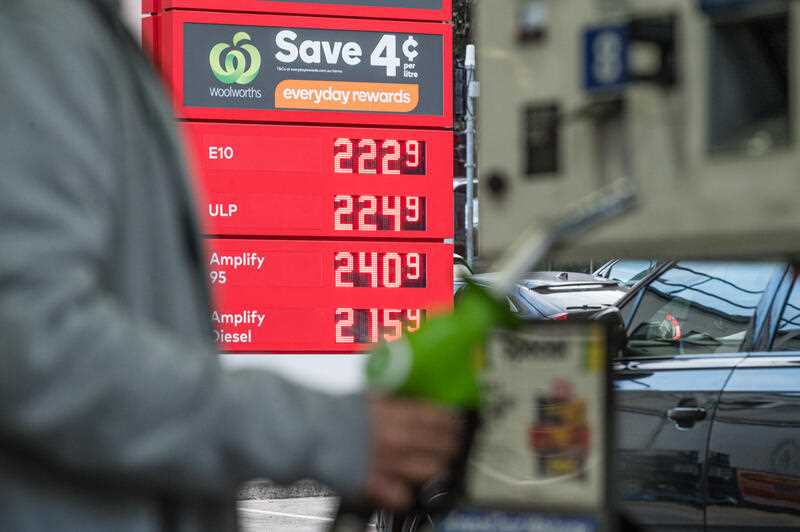Petrol prices have jumped more than seven per cent in three months as volatility in oil markets and the weakening Australian dollar threatens to keep up prices.
Motorists have been commonly paying more than $2 a litre, though the average price as measured by the Australian Institute of Petroleum dipped just below last week.
The decision of oil-producing countries to slash supply, the war in Ukraine and the weaker Australian dollar have been keeping pressure on fuel prices.
Fuel price pain is expected to add a quarter of a percentage point to the September quarter consumer price index.
The conflict between Israel and Hamas in the Middle East is also expected to keep pushing up global oil prices, though this won’t be captured in the September inflation data.
Wednesday’s figures from the Australian Bureau of Statistics will be closely scrutinised ahead of the Reserve Bank’s November interest rate meeting.
A set of numbers that threaten the RBA’s expected timeline to bring inflation down to target by mid-2025 could tip the central bank towards further tightening.
Commonwealth Bank economists expect a 0.9 per cent quarterly increase in headline inflation, a number that’s fairly close to the RBA’s own predictions and therefore consistent with interest rates staying on hold for another month.
St George also expects the RBA to stay on hold in November although economist, Jarek Kowcza, from the bank said there were still upside risks to the inflation outlook that could keep pressure on the central bank.
The economist said elevated prices at the pump could pose a problem for headline inflation readings, if they stick around.
“The longer petrol prices remain elevated, the further they can feed through the supply chain, increasing the probability of being passed down to final prices,” he wrote in a note.
Mr Kowcza said the ongoing weakness in the Australian dollar was also flowing through to higher petrol prices.
Petrol prices also have implications for inflation expectations.
The Reserve Bank governor, Michele Bullock, said medium-term inflation expectations were still anchored and they would need to stay that way to return inflation to the two-to-three per cent target band according to schedule.
Lacklustre progress on services inflation has also been a source concern for the RBA.
Australia – like many other countries – appears to be struggling with sticky services inflation, with goods prices falling more rapidly as supply chain disruptions normalise.
Treasurer Jim Chalmers said inflation was proving more persistent both globally and in Australia, which would be reflected in the quarterly inflation figures.
“That’s why we’re rolling out $23 billion in relief through our 10-point plan to ease cost-of-living pressures, in responsible ways that don’t add to inflation.”
By Tess Ikonomou and Poppy Johnston in Canberra



